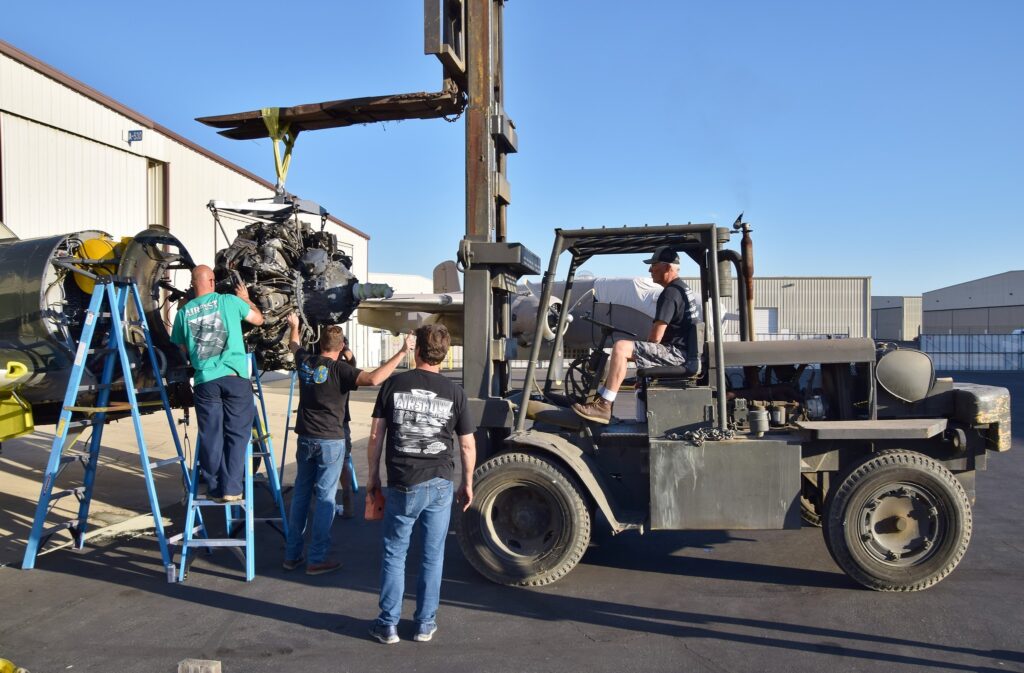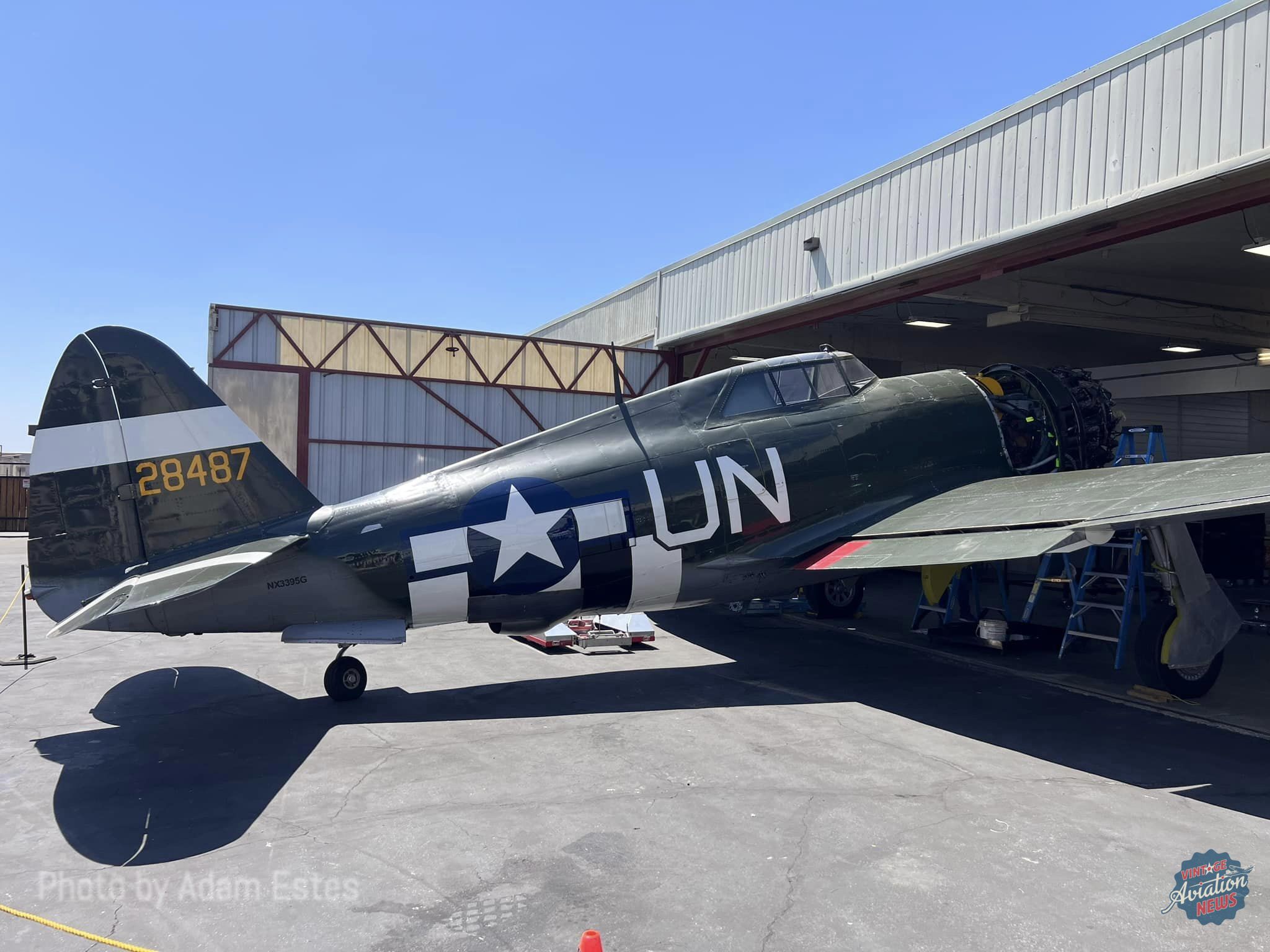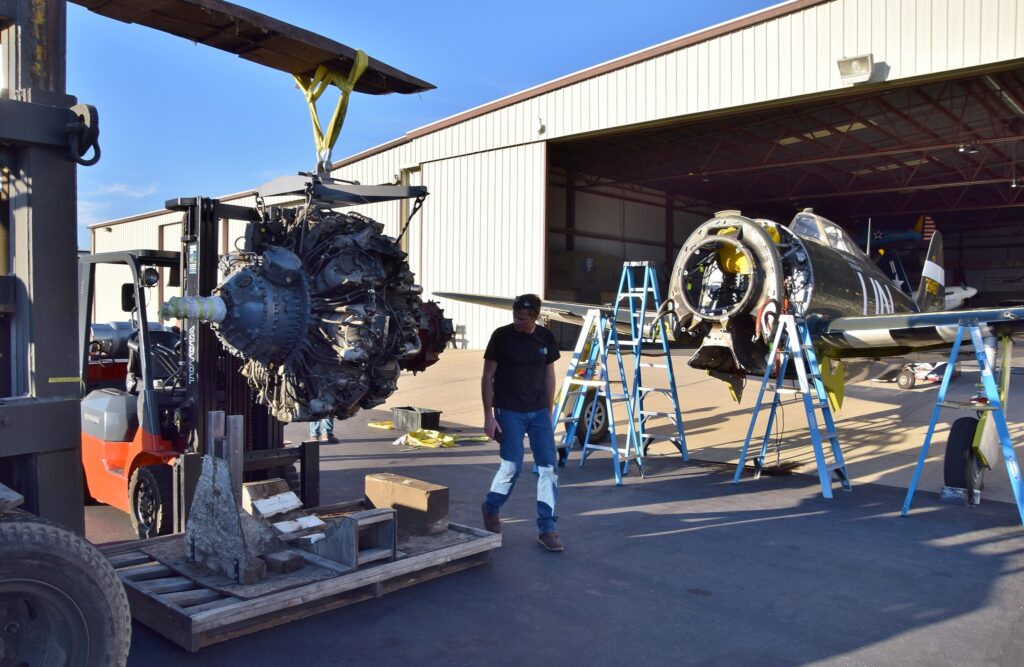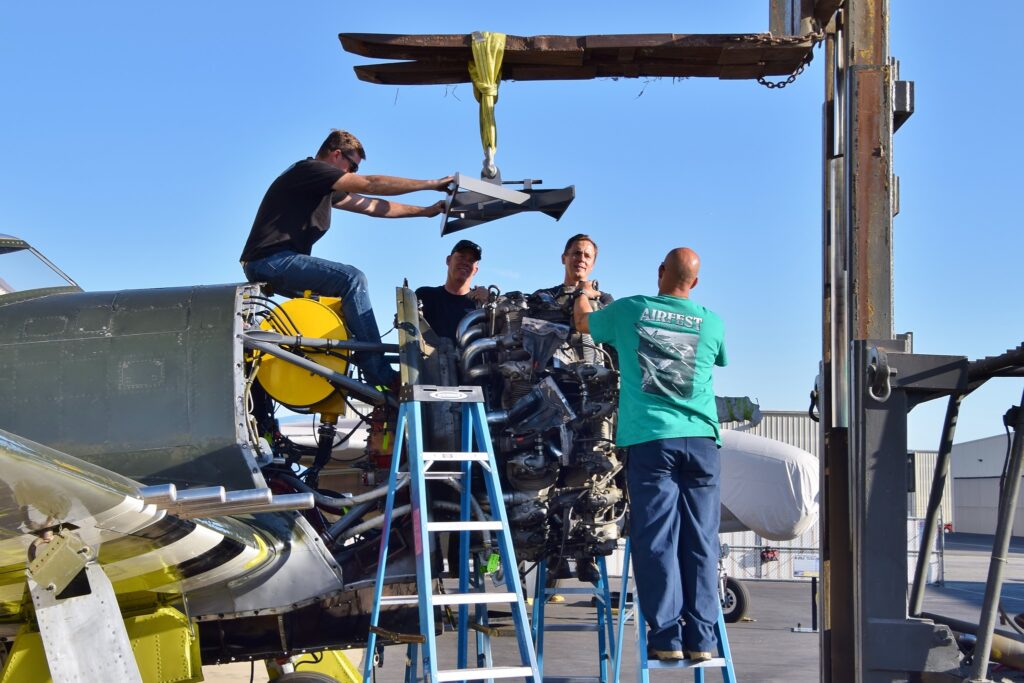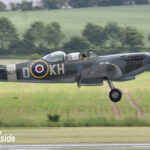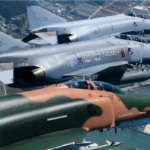Even on a quiet day flying-wise, mechanics at the Planes of Fame Air Museum (POF) in Chino, California are always working on something. One of their largest ongoing projects is an extensive overhaul of the museum’s Republic P-47G Thunderbolt, which has flown for decades with the museum, and once this complete and thorough overhaul is finished, it will continue to do so for years to come.
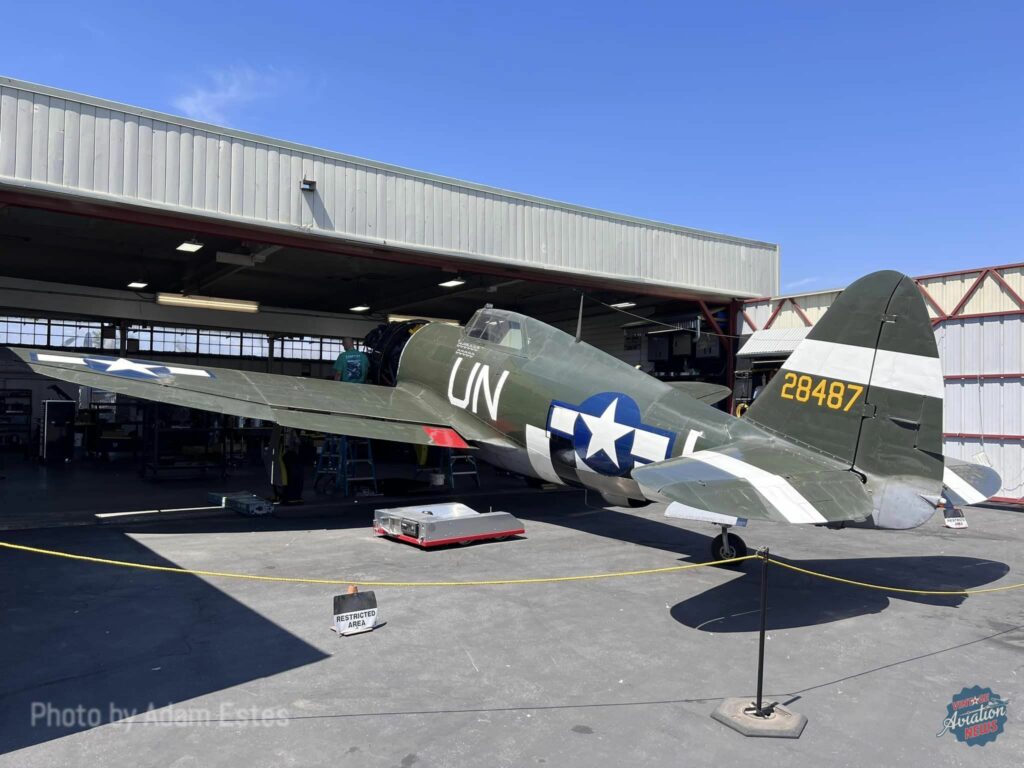
The museum’s Thunderbolt is different from other currently existent P-47 Thunderbolts, not only in the fact that it is not one of only three ‘Razorback” models left in airworthy condition, but that it did not emerge from the factories of Republic Aviation at either Farmingdale on Long Island, New York or Evansville, Indiana but was instead one of the 354 examples produced under license by the Curtiss-Wright company in Buffalo, New York. With the cancellation of the Curtiss P-60 fighter, Republic and Curtiss retooled the facilities intended for P-60 production for the production of P-47Gs, as the Curtiss-built Thunderbolts were designated.
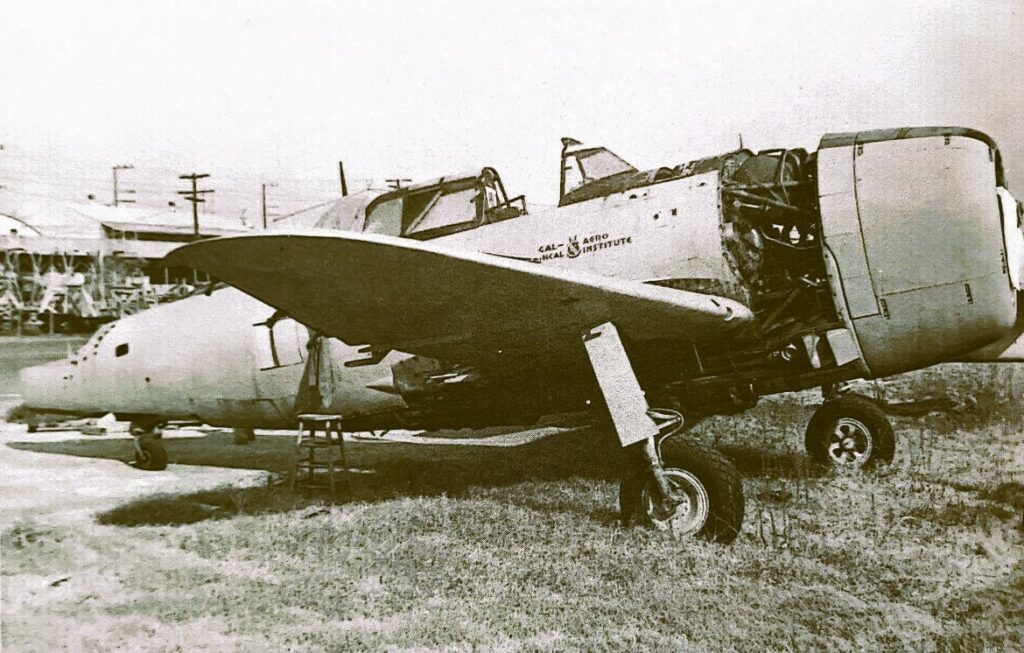
The P-47G was based on the “pre-bubble top” Thunderbolts such as the C and early D models (production of “bubble top” canopies on P-47Ds only started with the D-25 subvariant) and were largely kept stateside with training units to familiarize pilots with the P-47 before being deployed overseas into combat or with squadrons assigned to protect the continental United States. These assignments certainly did not receive the same coverage as their colleagues in combat but were just as vital to the American war effort. It is interesting to note that many more aircraft assigned to stateside duties were preserved after the war than those that were sent overseas, which were often scrapped in the immediate aftermath of the war or even abandoned to the elements in remote regions of the Pacific.
Upon emerging the Curtiss facility, POF’s P-47G, USAAF #42-25254, was assigned to the 507th Fighter Group (FG), 464th Fighter Squadron (FS), at Dalhart Army Airfield in the Texas Panhandle. After the war, the aircraft was sold as surplus and used as an instructional airframe at the Cal-Aero Technical Institute at Grand Central Airport in Glendale, just north of downtown Los Angeles.
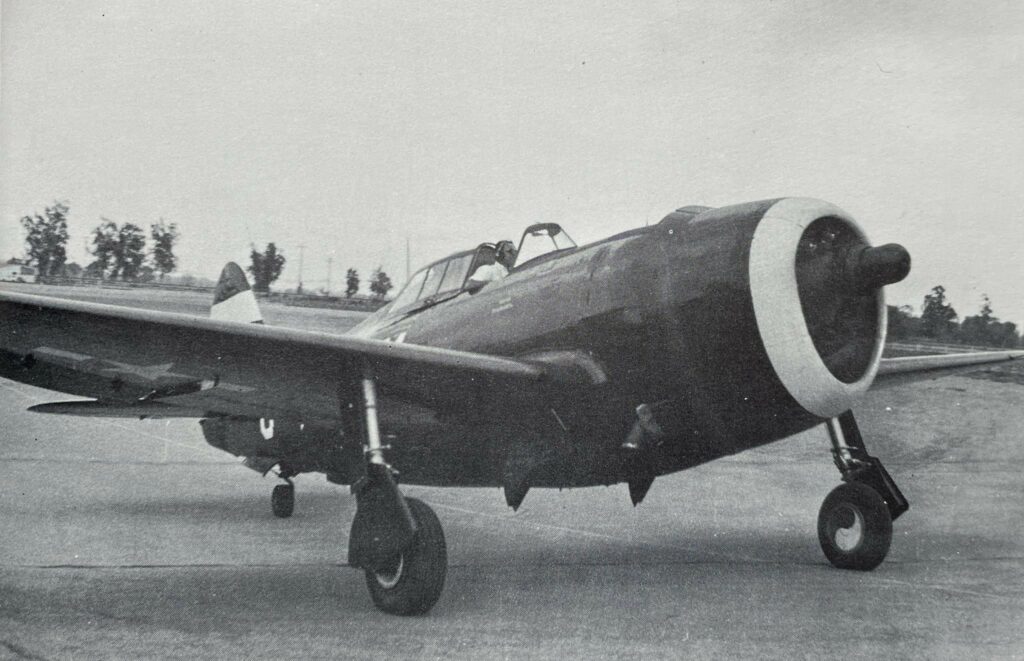
Established in 1923, Glendale Municipal Airport (later renamed Grand Central Air Terminal- GCAT) was one of the busiest airports in Los Angeles during the 1930s, with aviation luminaries like Charles Lindbergh, Amelia Earhart, Jack Northrop, and Howard Hughes being well-acquainted with the field. GCAT was also used in numerous aviation films of the 1930s. During World War II, the field was home to the Cal Aero Technical Institute and used purely for military purposes, especially for training mechanics in servicing aircraft. After the war, general aviation resumed at GCAT, but with the growth of Mines Field (now Los Angeles International Airport) and the postwar development of other industries and residential areas in Los Angeles, GCAT soon began to wither and by 1959, the airport would close for good.
A young collector named Edward T. Maloney purchased four aircraft in total from Cal Aero before it closed. These included a P-51A, P-63, Me 262, and the P-47G.
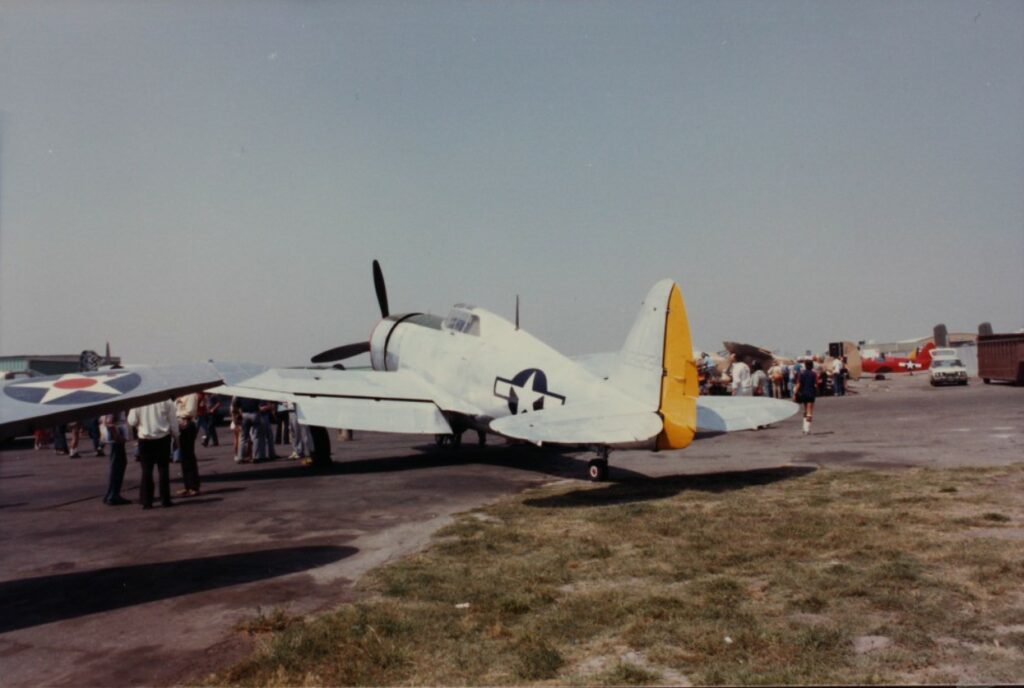
Maloney stored the Jug at his family home until he opened his now world-famous air museum in Claremont, California in 1957, then simply called The Air Museum. It would not be until 1963, though, with the move from Claremont to Ontario Airport that the P-47 would return to the skies and was flown in several air shows throughout the 1960s. Following a forced landing in 1971, the aircraft was restored to flight status in 1985 and has participated in POF events ever since. From flying demonstrations held on the first Saturday of any given month to the large airshows held at Chino Airport and other venues across the western United States.
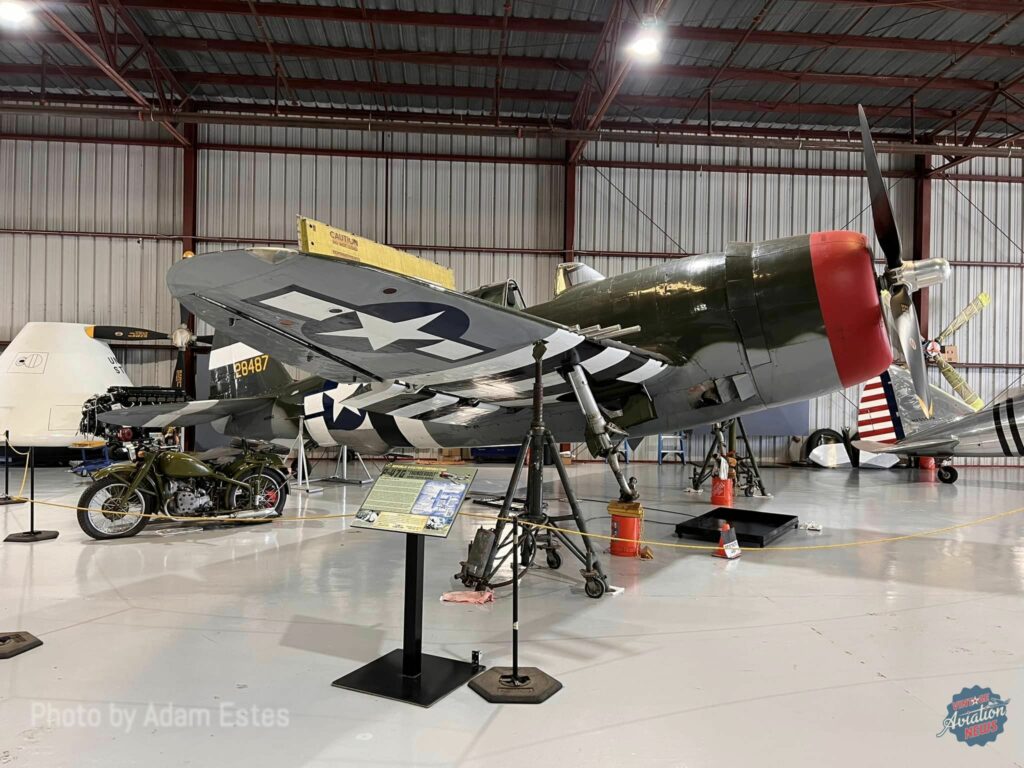
Over the decades ‘254 has sported several paint schemes, including Miss Behave during the late 1960s, Penrod and Sam during the early 1980s, and the last P-47 flown in combat by Robert S. Johnson, who’s 27 victories made him the second-highest scoring American ace in Europe, second only to a fellow member of Zemke’s Wolfpack– Francis “Gabby” Gabreski. The fighter’s most famous scheme however, was worn by the aircraft both in the early days of the museum and in recent years has been in the colors of Republic-built P-47D USAAF #42-8487, which was purchased through a fundraising effort by the citizens of Atlantic City, New Jersey to support the war effort. As a result, USAAF #42-8487 was christened Spirit of Atlantic City, N.J., and assigned to the 56th FG, where it was flown by Walker “Bud” Mahurin, who scored 19.75 victories while flying with the Wolfpack.
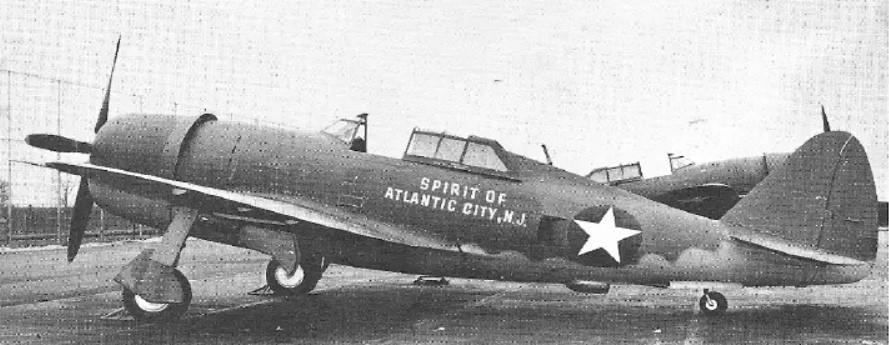
While Mahurin flew other P-47s during his time in Europe, Spirit of Atlantic City was the most famous example he flew. On March 27, 1944, Mahurin participated in the shootdown of a Dornier Do 217 heavy fighter but was hit by fire from the Dornier. Forced to bail out over Nazi-occupied France, Mahurin was rescued by members of the French Resistance, who kept him concealed from the Germans until he could be flown back to Britain on the night of May 6-7, 1944, in an RAF Westland Lysander. Because of knowledge of the French Resistance’s operations, Mahurin was transferred to the Pacific where he scored one additional victory.
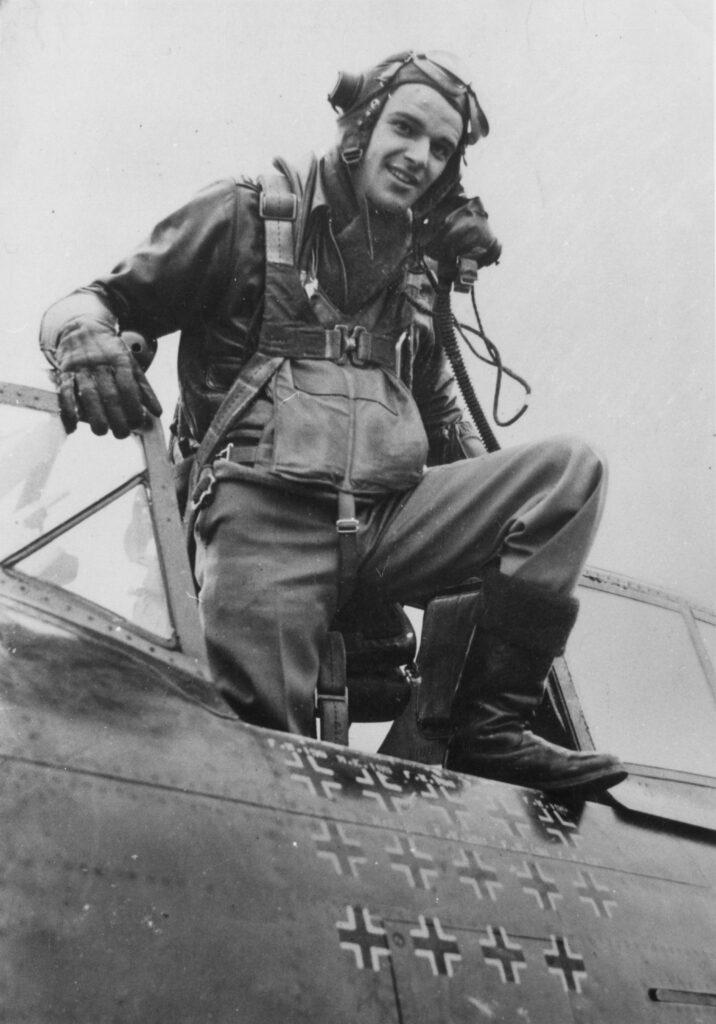
Mahurin, however, would see further combat in the skies above Korea at the controls of an F-86 Sabre, sharing credit for a further 3.5 MiG-15s. However, Mahurin was shot down by North Korean ground fire during a strafing run on May 13, 1952. After crash-landing his Sabre, where he broke his arm in the crash, Mahurin was captured and subjected to sixteen months of physical and psychological torture. At one point, in 1953 after the armistice ending the fighting had been signed, he was forced to make a confession that American forces had committed war crimes against North Korea while his captors withheld information from him that an armistice had been reached. When he was finally returned to freedom, Mahurin provided valuable information on brainwashing techniques to the Air Force.
Retiring from the Air Force in 1956, Mahurin worked in the aviation industry and was also one of POF’s first pilots and flew ‘254 and several other aircraft on numerous occasions. While the aircraft is currently only partially in the markings of Spirit of Atlantic City, there is a possibility that the aircraft could return to these or any other colors.
On June 8, 2024, the museum removed the Pratt & Whitney R-2800 and shipped it to Anderson Aeromotive in Grangeville, Idaho. Anderson has a well-earned reputation as one of the finest workshops for radial engine overhauls, and it will no doubt return to Chino in better-than-new condition. Meanwhile, the fact that the P-47 remains on public display during the overhaul also grants visitors unprecedented access to the internal bays of the fuselage, where the Thunderbolt’s turbo-supercharger is installed. The Thunderbolt was practically constructed around its turbo-supercharger and is largely responsible for the fighter’s large profile and its “Jug” nickname.
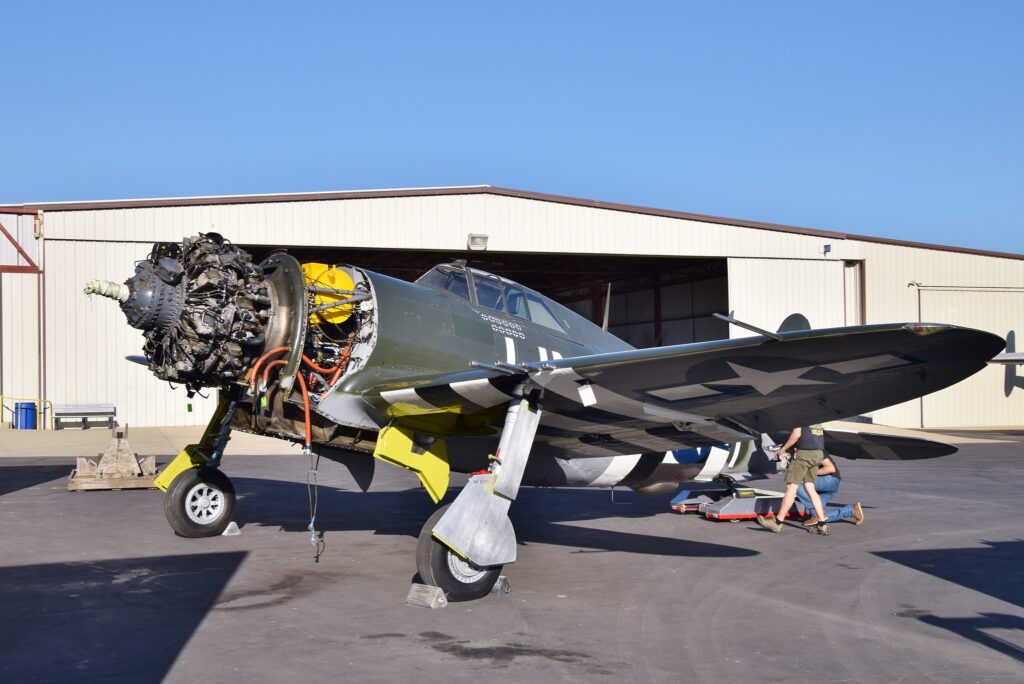
The warbird community has always had its fair share of enthusiasts eager to see an aircraft return to the skies. The mechanics and pilots at Planes of Fame are no different, but it takes a lot more than eagerness to get an aircraft flying, let alone something as complex as a P-47. When the aircraft is ready, the roar of that Double Wasp will be heard at an upcoming museum event, for which will be eagerly anticipating that first event with the rejuvenated P-47G.
